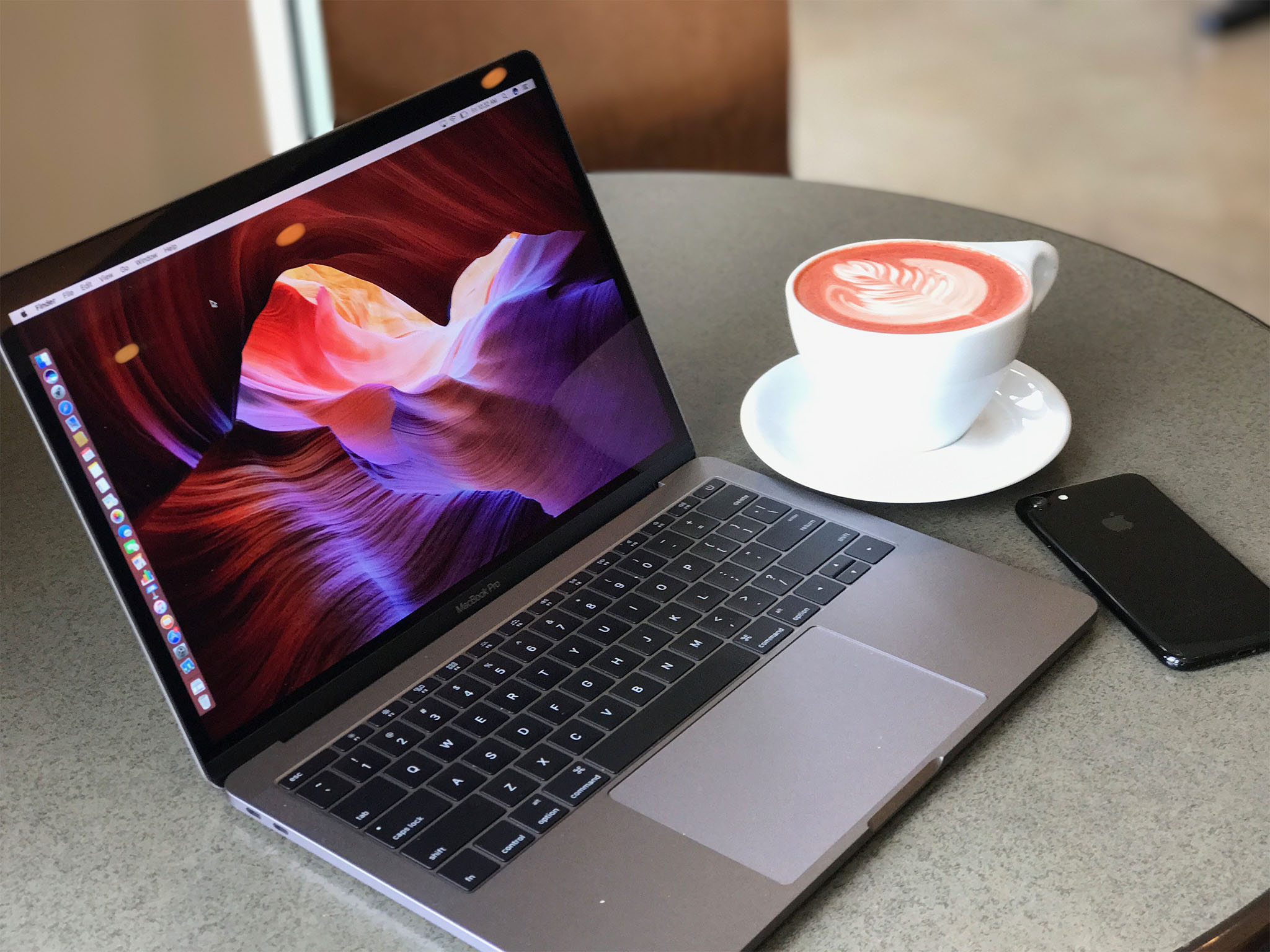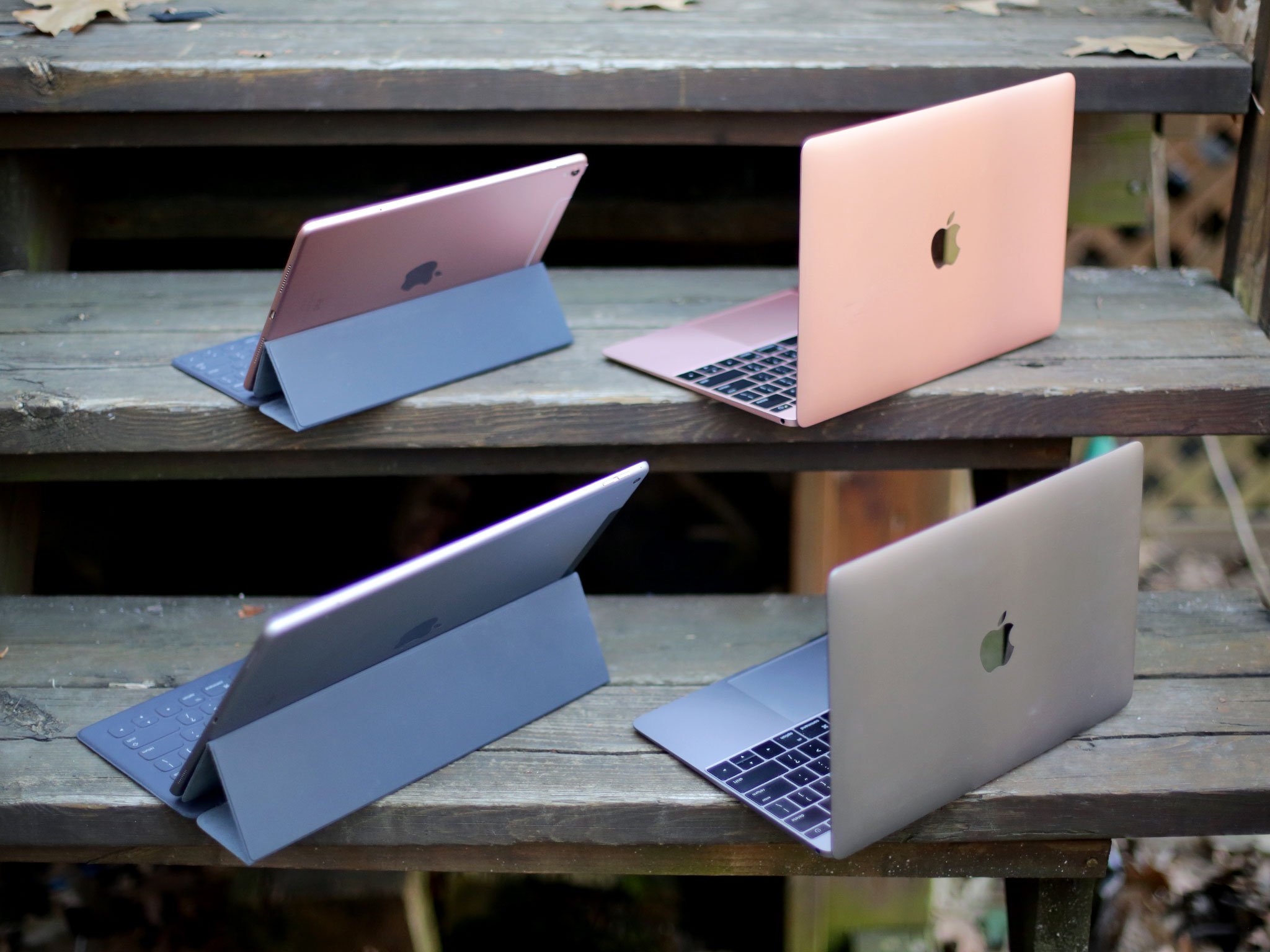Making the Mac multitouch. A bit.

Unlike Microsoft, Apple had a successful touch-first operating system with iOS. Unlike Google, Apple had a successful mouse-and-keyboard-first operating system with macOS. Microsoft had no choice but to spend years in the desert — that desert being Windows 8 — to make Windows into a touch-friendly-ish operating system. Google pivoted rapidly into multitouch with Android and ChromeOS. Apple, though, had to make a choice.
Mac Touch vs. iPad Type
Like Windows, Apple could have spent years of engineering and design resources grafting multitouch onto macOS, churned through several awkward release cycles, and come out the other side with a version of the operating system with targets big enough to jab a finger at.
Alternatively, Apple could spend those years and resources making iOS even better, more capable, and more encompassing.
For years there have been rumors of MacBook and MacBook Air-style clamshells running on ARM and iOS and perhaps that was something Apple flirted with or is still flirting with. In 2015, though, Apple released iOS 9 with significant enhancements for iPad, and followed up with iPad Pro, which added a MacBook-sized screen, smart keyboard connector, and Apple Pencil.
Then 2016 came and went with but a 9.7-inch variant of the Pro and a Safari-specific variant of split-view to show for itself.
There are rumors — there are always rumors — that as soon as next week we might see iOS 11 with drag-and-drop and other long-requested features, as well as a new 10.5-inch version of iPad that'll truly be next generation. But it still won't and should never be a Mac.
The future can't fly if it's tethered to the past. iPad can't be iPad if it's constrained by the preconceptions of Mac.
Master your iPhone in minutes
iMore offers spot-on advice and guidance from our team of experts, with decades of Apple device experience to lean on. Learn more with iMore!
So, what about the Mac?
Going touch-first native

Apple has thus far maintained, repeatedly, that touch isn't appropriate for the Mac. Yet almost every Windows and Chrome laptop shipping today has a touch screen and so do many desktops.
What's more, the first generation of kids raised on iPad are growing up. They're not touch-immigrants like us older folks. They're touch-native. They expect screens to be like iPhones and iPads. They expect them to respond to touch. And when they don't, there's no consideration given to ergonomics or context — they simply think the screen is broken.
I've never, not once, tried to touch my MacBook screen to interact with the interface. Classic trackpad-and-keyboard computing is hard-wired into my brain. I get borderline angry when my fingers have to leave my iPad Pro keyboard to hit some control I can't otherwise activate.
But I'm of that generation. I've seen kids try to touch my MacBook screen plenty of times. Especially when we're watching or doing something together, all huddled around it.
So, how could Apple reconcile its stated belief that touch is better on trackpads and bars than on screens for the Mac with the reality that user expectation is soon going to run 100% counter to that belief?
The same thing any immovable object does when it encounters an irresistible force: yield.
Multitouch vs. Multitouch gestures
It's possible we'll eventually see a version of iOS running on MacBook-like hardware, or we'll see something that replaces both iOS and macOS on a wide range of hardware, the way OS X replaced the old Mac OS.
And I don't think Apple should waste engineering and design resources on retrofitting a touch layer onto macOS.
What I do think could work, though, is adding a control layer. I realize it's easy to write something when you're not the one who actually has to implement it, but here's the thought:
Give Macs a touch screen that enables gesture navigation. Let people poke, swipe, and pinch the screen, if and when they really want to, the same way they can already on the trackpad.
Flick up a page in Safari. Zoom into a map. Tap to pause or play a movie. That sort of thing.
Out of touch, out of mind
For those that don't want or need it, they never have to use it. Their screens remain as untouched as they do today. For those who expect it, though, it'll work as expected.
Sure, they'll have to learn they can't do everything through the touch on a Mac, but I had to learn I can't do everything through the keyboard on an iPad.
You know what? I lived.

Rene Ritchie is one of the most respected Apple analysts in the business, reaching a combined audience of over 40 million readers a month. His YouTube channel, Vector, has over 90 thousand subscribers and 14 million views and his podcasts, including Debug, have been downloaded over 20 million times. He also regularly co-hosts MacBreak Weekly for the TWiT network and co-hosted CES Live! and Talk Mobile. Based in Montreal, Rene is a former director of product marketing, web developer, and graphic designer. He's authored several books and appeared on numerous television and radio segments to discuss Apple and the technology industry. When not working, he likes to cook, grapple, and spend time with his friends and family.

